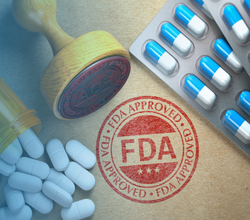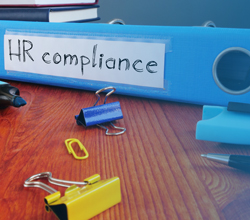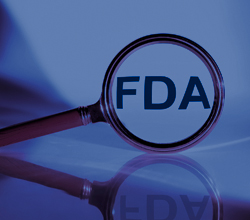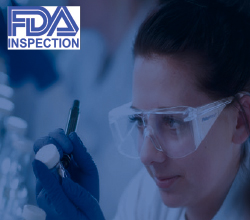
Validation Statistics for Non-Statisticians
 Alan M Golden
Alan M Golden
 60 Min
60 Min
Product Id: 706944
In this program, we will discuss the common statistics tools and techniques used in validation. Through real world examples and interactive exercises, we will demonstrate the basic concepts of statistics and how to apply them to your validation projects. Discussion will center around measures of variance, sample distributions, and expressions of variance. The session will conclude with a discussion of the concept of process capability and using process capability to set acceptance criteria for validation.

Design History File (DHF) Remediation using Principles of Lean Documents and Lean Configuration
 Jose Mora
Jose Mora
 90 Min
90 Min
Product Id: 706942
Design History File (DHF) Remediation using Principles of Lean Documents and Lean Configuration. Does your DHF remediation process resemble the very mess that it is trying to resolve?
The Design History File (DHF) is the objective evidence that a medical device was designed per design control guidance and applicable regulations and standards. While it is retrospective in nature, it is the end result of a process that begins with planning and ends with Design Transfer and has the Device Master Record (DMR) as a deliverable.

How to Comply with FDA Regulations for Tobacco-Related Products: Computer System Validation, 21 CFR Part 11, & Data Integrity
 Carolyn Troiano
Carolyn Troiano
 90 Min
90 Min
Product Id: 706937
This webinar is intended for those working in the FDA-regulated tobacco and related industries, including e-liquids (vapor), e-cigarettes, cigars, and smokeless tobacco products. Functions that are applicable include research and development, manufacturing, Quality Control, distribution, clinical testing and management, adverse events management and post-marketing surveillance. You should attend this webinar if you are responsible for planning, executing or managing the implementation of any system governed by FDA regulations, or if you are maintaining or supporting such a system.

Aseptic Processing Overview and Validation
 Kelly Thomas
Kelly Thomas
 90 Min
90 Min
Product Id: 706212
This course will provide an overview of the requirements for aseptic and bulk manufacturing operations, including facility design, contamination controls and acceptable personnel behaviors.

US FDA's AI Framework for Medical Devices
 John E Lincoln
John E Lincoln
 90 Min
90 Min
Product Id: 706934
The ability of artificial intelligence / machine learning software to learn from real-world feedback and improve its performance is spurring innovation and leading to the development of novel medical devices. The FDA recognizes AI's advantages and dangers and has started to outline its expectations of industry and device design, programming, unique validation issues, documentation and submissions.

Analytical Method Validation and Transfer
 Kelly Thomas
Kelly Thomas
 90 Min
90 Min
Product Id: 706186
This course will provide a thorough review of regulatory guidelines on method validation and transfer. It provides guidance on how to perform QC analytical test method validations and transfers.

Risk-Based Verification and Validation Planning to Meet US FDA and ISO 13485 Requirements
 John E Lincoln
John E Lincoln
 90 Min
90 Min
Product Id: 700149
In this webinar attendees will learn both the U.S. FDA and EU's MDD/MDR expect documented risk-based "master" and "individual" V&V planning. Various validation terms are explained with useable “working” definitions. The Validation Master Plan, and suggested field-tested individual V&V plans, Test Report / Protocol formats, and individual test cases, IQ, OQ, and PQs, are presented.

Sample Size Determination for Design Validation Activities
 Steven Wachs
Steven Wachs
 90 Min
90 Min
Product Id: 705852
Statistical Methods are typically used to ensure that product performance, quality, and reliability requirements are met during the Design Validation phase of product development. This webinar discusses common elements of sample size determination and several specific sample size applications for various design validation activities including Reliability Demonstration/Estimation, Acceptance Sampling, and Hypothesis Testing.

Good Documentation Practice (GDP) and FDA Validation Compliance for Regulated Computer Systems and Data
 Carolyn Troiano
Carolyn Troiano
 90 Min
90 Min
Product Id: 706925
Computer system validation has been regulated by FDA for more than 30 years, as it relates to systems used in the manufacturing, testing and distribution of a product in the pharmaceutical, biotechnology, medical device or other FDA-regulated industries. The FDA requirements ensure thorough planning, implementation, integration, testing and management of computer systems used to collect, analyze and/or report data. Electronic records and electronic signatures (ER/ES) came into play through guidelines established by FDA in 1997, and disseminated through 21 CFR Part 11. This code describes the basic requirements for validating and documenting ER/ES capability in systems used in an FDA-regulated environment.

Cleanroom, Microbiology and Sterility Assurance Practices for Drug and Device Manufacturers
 Kelly Thomas
Kelly Thomas
 90 Min
90 Min
Product Id: 706927
This course will educate you about various key elements of sterility assurance and contamination control such as Cleanroom Regulations, Classification, Sources, and types of particles, Design Requirements, Validation/Qualification, Operations, Environmental Monitoring Program requirements, Excursion investigations, Data Trending, Microbiological processes/methodology, Cleanroom cleaning/disinfection.

Risk Management of Raw Materials in a GMP Environment
 Barry A Friedman
Barry A Friedman
 90 Min
90 Min
Product Id: 706909
The objective of this live, interactive webinar is to explore raw materials in a cGMP environment, their various regulatory requirements and how they may affect the timeline of meeting the release date of your Company’s products. Please plan to bring additional personnel to the webinar to obtain cross-Departmental training.

Computer System Validation (CSV) vs. Computer System Assurance (CSA): Aligning the Agile Methodology to the GAMP®5 "V" Model and System Development Life Cycle (SDLC) Methodology
 Carolyn Troiano
Carolyn Troiano
 120 Min
120 Min
Product Id: 706921
As part of the Case for Quality program US FDA Center for Devices and Radiological Health noted how an excessive focus by industry on compliance rather than quality may be diverting resources and management attention toward meeting regulatory compliance requirements vs. adopting best quality practices. There has also been a lower than anticipated investment in automation and digital technologies, which could greatly improve quality and process control. A key element is a risk-based, product quality and patient-centric approach to Computer System Assurance (CSA) vs. the traditional Computer System Validation (CSV) waterfall approach. This encourages critical thinking based on product and process knowledge and quality risk management over prescriptive documentation driven approaches.
This is where FDA determined that “WHAT” is required can be done (the “HOW”) in different ways and does not have to be according to the “checklist” mindset of most CSV work, where you create documents without specifically addressing the risk of potential failure of each requirement.
GAMP®5 supports the use of incremental, iterative, and evolutionary approaches including agile, for development of custom applications. Keys to success include a robust Quality Management System and well trained and highly disciplined teams following well-defined processes supported by tools and automation.

Impact Assessment for Change Control
 Alan M Golden
Alan M Golden
 60 Min
60 Min
Product Id: 706337
Attend this webinar to learn the importance of doing a complete impact assessment prior to implementation of changes under change control. Tools and techniques will be presented to aid in organizing and streamlining impact assessments.

How to Ensure Your Foreign Vendors are FDA Compliant: Conducting Vendor Audits, Monitoring, and Using Checklists
 Joy McElroy
Joy McElroy
 90 Min
90 Min
Product Id: 705735
This webinar will give information on auditing foreign vendors for FDA compliance. It will discuss initiating audits, planning and preparing vendor audits, as well as, monitoring foreign vendor compliance. This webinar will provide FDA guidance on foreign vendor expectations, what to do and what not to upon selecting a foreign vendor. It will also provide audit formats and checklists for ensuring a foreign vendor is qualified.

Normality Testing: Applications and Issues
 Steven Wachs
Steven Wachs
 90 Min
90 Min
Product Id: 706899
This webinar discusses applications of normality testing and several issues that may arise when testing data for normality. Several methods for testing data for normality are presented. We discuss some of the common types of goodness-of-fit tests that may be used (e.g. Andersen-Darling, Kolmogorov Smirnoff, etc.). We also discuss common reasons that normality tests are rejected.

USP <61>/<62> Microbiological Enumeration and Examination of Non-Sterile Products – Understanding the Current Standards for the Revised USP and Harmonized EP Microorganisms
 Barry A Friedman
Barry A Friedman
 90 Min
90 Min
Product Id: 706883
The objective of this live, interactive webinar is to explore the changes to these historic USP test methods, compare them to the new European Pharmacopoeia (EP), 2.6.12 Microbiological Examination of Non-Sterile Products: Microbial Enumeration Tests and 2.6.13 Microbiological Examination of Non-Sterile Products: Test for Specified Microorganisms, methodology and how it impacts the typical cGMP microbiological laboratory.

Advanced Auditing for Data Integrity
 Joy McElroy
Joy McElroy
 90 Min
90 Min
Product Id: 705275
This training program will teach attendees best practices on how to perform audits for data integrity within their organization. Attendees will also learn how to centralize management and eliminate silos.

Useful Statistical Methods for Defining Product and Process Specifications - Part II
 Steven Wachs
Steven Wachs
 75 Min
75 Min
Product Id: 706898
This webinar covers useful and important statistical methods that assist scientists and engineers in the development of appropriate product and process specifications. Appropriate product specifications are critical to achieving adequate and reliable product performance.

Cybersecurity and US FDA Requirements
 John E Lincoln
John E Lincoln
 90 Min
90 Min
Product Id: 706716
Cybersecurity is the art of protecting networks, devices, and data from unauthorized access or criminal use. It is the practice of ensuring confidentiality, integrity, and availability of information.

Useful Statistical Methods for Defining Product and Process Specifications - Part I
 Steven Wachs
Steven Wachs
 75 Min
75 Min
Product Id: 706897
This webinar covers useful and important statistical methods that assist scientists and engineers in the development of appropriate product and process specifications. Appropriate product specifications are critical to achieving adequate and reliable product performance.


























